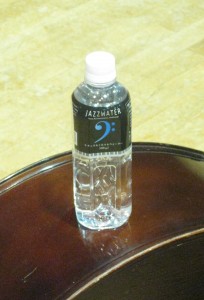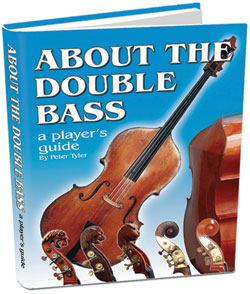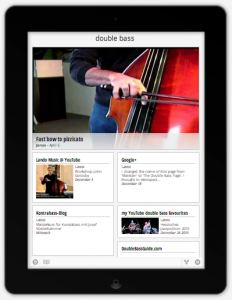Bassist Phil Palombi has recently completely overhauled his website from the ground up and now has a Blog.
Palombi has recently recorded a CD with Scott LaFaros Prescott double bass, which is now owned by luthier Barrie Kolstein. He also published a book with 15 Scott LaFaro solo transcriptions taken from the Bill Evans trio recordings Sunday at the Village Vanguard and Waltz for Debby. This book contains highly detailed transcriptions of all 15 of Scott’s bass solos, including the alternate takes, and is available at Palombi’s website.
Author Archives: Jonas
Let the Bassist have a drink!
Bass2012 Copenhagen: the program is online
Today, I’ve booked my room and flight to Copenhagen … and I realized that the program is already published. I’ve put it into an iframe below; the original URL is http://programme.bass2012.eu/
Very convenient: it’s a Google calendar, so you can select and add events to your personal schedule. I now have all the masterclasses, lectures and concerts I want to visit on my iPad and look forward to some very interesting days at Copenhagen!
Battle of Copenhagen (Bass2012 / Aug, 17th)
In August, Copenhagen will be the place to be for double bass players from all around the world. Andreas Bennetzen is going to organize a big event that all players attending Bass2012 can take part:
Be part of the biggest double bass orchestra concert ever!
My name is Andreas Bennetzen and I am a classically trained double bass player, contemporary composer and former chairman of the Danish Bass Society.
My partners in the art-group Live Art Installations and I, would like to invite YOU, to take part in a very special theatrical double bass concert. The concert takes place during the international BASS 2012 convention in Copenhagen.
On August 17th we are staging a spectacular outdoor concert. We call it the ‘Battle of Copenhagen’, but instead of firing canons, we will be shooting explosive double bass music from a gigantic double bass orchestra, with spectacular light and fire installations accompanied by historic war ships.
The concert features 150-200 double bassist playing live. A breathtaking choreography of historic sailing ships, floating dancers and light and fire installations on the water.
The event takes place in the beautiful old parts of Copenhagen Harbor, close to the Little Mermaid, and is inspired by the old sea battle of 1801.The concert is supported by The Danish Art Council and the team behind is dedicated to making this a both unique and pleasant experience for you.
We would consider it an honor if you took part in this event, and helped us in making the 17th of August an evening not soon to be forgotten.A film of the concert will be made. Free to share on You-Tube with friends and colleagues.
All you have to do is
1. Be available and in Copenhagen the 17th August 2012.
2. Take part in one or two rehearsals in the days before the event. Rehearsals will take place in the Opera.To join the bass orchestra or more information about the ‘Battle of Copenhagen’ event, please contact Andreas Bennetzen, www.andreasbennetzen.dk
book review: “About the Double Bass“ – a player’s guide by Peter Tyler
Peter Tyler’s book on the Double Bass covers a wide range of topics and answers many questions that both beginners and advanced players may ask their bass luthier or teacher.
Tyler, who runs a double bass workshop near London, has written this book primarily with the player in mind – not the maker or repairer. The book starts with the anatomy of the bass: sizes, shapes, how it is constructed. Chapter 2 is about the bow, it’s sizes and function, and re-hair. Tyler explains how the acoustic sound is produced, as well as how you can amplify the sound electronically. He explains the different types of strings, and how to change them. He gives advices on buying a bass, and how to maintain and care about it. And he goes beyond things a player usually does by himself: some minor repairs and setup-tasks like positioning the soundpost, fitting bridge feet and bridge adjusters, eliminating buzzes and rattles are described briefly.
“About the Double Bass” is a great resource for all newbies with the double bass, but has also many useful informations for the advanced player.
“About the Double Bass” – 124 pages, 4-color-printing, softcover. Available at the author’s website.
Presto Jazzicato strings soundclip
With my iPad, Garage Band and my new Tascam IM2 microphone, I’ve recorded a sound demo of the Jazzicato Tungsten strings this morning. The iPad is really great to record with. Along with the Tascam IM2, it’s just plug and play and record. Home recording never has been easier!
[soundcloud url=”http://api.soundcloud.com/tracks/46263586″ iframe=”true” /]
How bass Solos Ruined Jazz
Bass solos suck. Let’s face it, the ponderous, unwieldy bottom feeder is the least interesting jazz instrument, lacking even the visual appeal of drum solos.
… says Alan Kurtz at www.jazz.com. In his opinion, one man changed it all: Scott LaFaro. He „perversely transformed the conventional trio from a pianist supported by bass and drums to a bassist backed by piano and drums.“
Scott LaFaro, the Popeye of Jazz, who makes Lennie Tristano run away during a concert set?!?!?
Google Currents
If you own an iPad, iPhone or Android Tablet, you now can read my posts with Google Currents:
Ray Brown about playing without amplification
In talking about Blanton before you were mentioning the difficulties bassists had in big bands because of the lack of amplification. Now, you had to play very fast with Dizzy Gillespie. Did you have amplification by that time? How did you deal with…
Ray Brown: Well, I didn’t play fast solos. We were just playing fast tempos.
Christian McBride: Things To Come! [LAUGHS]
Ray Brown: When I was talking about playing fast I was talking about the way Christian McBride plays now. 20-30-40 years ago you wouldn’t have heard all those notes he’s playing. Now you can hear every one of them.
But then, from what I gather, people heard you pretty clearly, and those are some tempos that havent been caught up with yet!
Ray Brown: Were not discussing tempos, now. Were discussing solo lines. That’s a big difference. Nobody dared play anything that fast because you couldn’t hear it. Oscar Pettiford played some magnificent solos, and you didn’t really get to hear him until he joined Duke Ellington.
from: http://www.jazz.com/jazz-blog/2009/12/16/remembering-ray-brown
Fast bow to pizzicato
Patrick Neher shows on YouTube how to speed up the transition from bow to pizzicato. Makes me think of practising some French bow …
[youtube=http://youtube.com/watch?v=afTruloiJx4]



